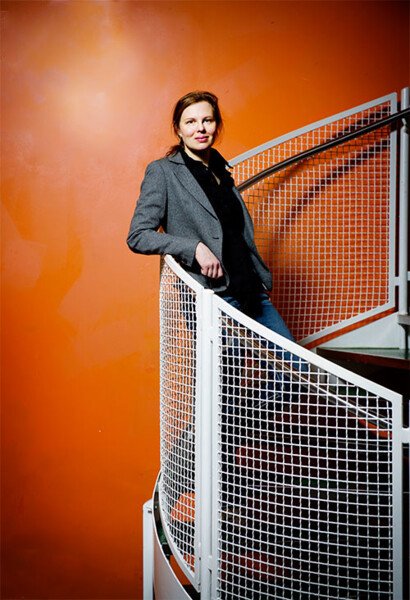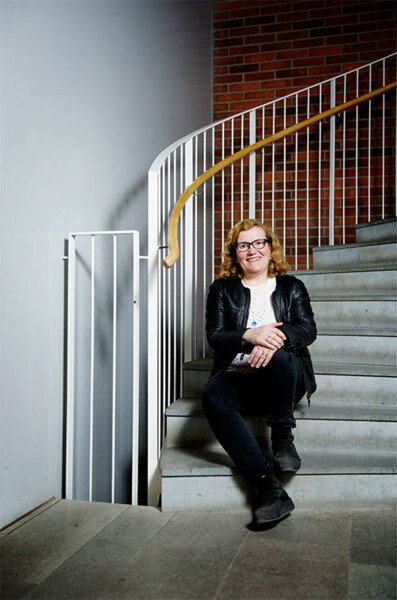Three researchers seeking alternatives
Animal testing is a part of medical research. However, work is continuously ongoing to reduce the number of animals, improve technology and replace animal testing with other methods. Meet three researchers breaking new ground.
Name: Anna Domogatskaya
Title: Senior researcher at the Department of Clinical Science, Intervention and Technology.
Researches: Finding good medicines for diabetes patients.

"Treat animals like patients"
“I want to be able to tell my children that I work with animal testing without feeling guilty. That’s why I think about treating animals like they are small patients. It’s important that we make an effort so that the animals don’t need to suffer. If animals get the same care as human beings who undergo surgery, then animal testing is fine. But even though we have strict laws in Sweden, animals may be used unethically here and in other parts of the world. If we develop good and cheaper alternatives for animal testing in our research, we can reduce the suffering of animals throughout the world.
I’m studying what is referred to as pancreatic islets, natural ‘micro-organs’ inside the pancreas. These micro-organs, which we remove from dead animals, have long been used for diabetes research as they produce insulin. Now I want to develop human micro-organs artificially and ensure that they are similar to pancreatic islets. They are extracted from normal skin cells which have been reprogrammed to stem cells, referred to as iPSCs. If we succeed then they will be more ethical, economical and perhaps even better at predicting how us human beings react to medicines than the micro-organs derived from mice.
Animal tests are still required for pharmaceutical testing. We shouldn’t really say to patients that we don’t know whether the medicine they have been given is safe and effective. Animal testing is a part of our current control system.”
Name: Lena Palmberg
Title: Professor at the Institute of Environmental Medicine.
Researches: Developing a 3D model of the lung to study effects of air pollution.

"It’s time to find options"
“Recent years have witnessed the emergence of stronger social involvement against animal testing. I personally feel that animal tests are ethically questionable and that it’s time to find good options. Now we have still come far in terms of preventing unnecessary animal tests.
In order to understand the lung diseases chronic bronchitis and COPD, I have developed a 3D model of human cells which contain many of the cell types which we have in the upper respiratory tracts. In a study I used small particles from exhaust fumes which I subjected the models to. The particles were distributed evenly above the surface, but after a while I could see how they came together to one point, which indicates that the model’s defence mechanism functioned. I think that the particles were captured in the mucus layer and pushed together by the cilia.
I haven’t done animal testing since I took my doctorate. But to evaluate our 3D models, I’m planning to conduct a comparative study where I expose both laboratory animals and our models to harmful small particles from, for example, air pollution and compare with known effects they may have on human beings. If my models have similar responses as animal models, then animal testing could decline. But pharmaceutical testing in models of individual organs cannot replace animal testing fully, as you only examine one organ, not an entire body.”
Name: Volker Lauschke
Title: Associate Professor at the Department of Physiology and Pharmacology
Researches: The effects of medicines, but also how liver diseases occur and can be prevented.

"Liver in test tube can replace animal testing"
“I want to reduce the risks of new medicines for patients. Liver toxicity is one of the most common causes of medicines being withdrawn. Currently it is required for drugs to be tested on two types of animals, for example, rats and rabbits, before it is used in humans. But the regulations also encourage the development of alternative methods which can predict the effects of medicines, as animal tests do not answer how they function in a human patient’s liver.
By using excess liver cells from liver donations, my colleagues and I have developed a 3D model which is functionally similar to a human liver. The model can be used for many weeks and serves as an alternative method to animal tests.
Hopefully, in the future we will not need to use animals to find out how a medicine affects the human liver. Instead our or similar methods with human liver cells in test tubes will replace animal testing. However, more research is required so that we can be certain that our 3D liver system is at least as good as animal testing at predicting the risks of medicines. I think that it is an added bonus if animal tests can be avoided, but that is not my primary goal. The most important aspect is finding the most reliable way to predict the effects of a medicine before it is tested on human patients.”
As told to Maja Lundbäck
Photo: Annika af Klercker
First published in Swedsih in the magazine "Medicinsk Vetenskap", no 1, 2017. Researchers' titles updated in May 2019.
